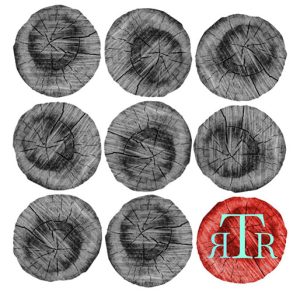Virginia Quarterly Review – Fall 2007
Volume 83 Number 4
Fall 2007
Deborah Diemont
The Virginia Quarterly Review’s Fall 2007 issue, “South America in the 21st Century,” is a must-read for anyone interested in Latin American politics and culture, as well as those fond of New Journalism – using the fiction writer’s tools, like scene setting, character development, and dialogue to build news stories. The techniques have been accepted for decades now, but here they are spit shined to gleaming. I read the magazine from cover to cover. The poetry, fiction, cartoons, and collages are note-worthy, especially Chilean poet Marjorie Agosín’s poetry of exile; but the journalistic impulse dominates the writing and photography.
The Virginia Quarterly Review’s Fall 2007 issue, “South America in the 21st Century,” is a must-read for anyone interested in Latin American politics and culture, as well as those fond of New Journalism – using the fiction writer’s tools, like scene setting, character development, and dialogue to build news stories. The techniques have been accepted for decades now, but here they are spit shined to gleaming. I read the magazine from cover to cover. The poetry, fiction, cartoons, and collages are note-worthy, especially Chilean poet Marjorie Agosín’s poetry of exile; but the journalistic impulse dominates the writing and photography.
Eighteen-months in the making, this issue is a collaborative effort of the VQR staff, editors from the Peruvian magazine Etiqueta Negra (Black Label), writers and artists from North and South America, translators from Words Without Borders, and the Pulitzer Center on Crisis Reporting. Several of the articles are available online, but that’s no reason to forgo the magazine. Reading it reminded me that I’d become cynical about “balance” as an ethic in reporting, as the slant in papers and magazines is, more often than not, transparent. It is not that the writing here lacks bias – or that good writing should – but that a story like Pat Joseph’s “Soy in the Amazon” could present conflicting views with such complexity. After listening to Greenpeace, soy farmers, an American expatriate farm consultant, and local politicians, I left the diminishing Amazon knowing more and sure of less. Through the metaphor of an octopus with its tentacles reaching everywhere, Philip Robertson presents an unsettling look at relations among U.S. companies that export bananas, drug smugglers, and paramilitary groups in Columbia. At the same time, he creates reader sympathy for a “bad guy” informant.
Because I found the magazine so strong, I’m hesitant to say it, but it seems that “South America in the 21st Century” continues to mean fewer opportunities for writers who are women. I turned often to contributors’ notes, thinking, “Who did this amazing work?” which led me to note four women among the twenty-three contributors. I did love when Gabriela Wiener, reporting on Peruvian transsexuals doing sex work in Paris, asked her subject if she could touch his silicon breasts. Having left her baby home in Spain, and suffering from mastitis, the writer was curious about fake breasts that look sexier than real ones. And I concede it would be harder for a woman journalist to gain the trust of a paramilitary soldier by hanging out in a bar – as did Robertson. That said, I’ll look for more work by Wiener, among the other women and men who write from unlikely places. Get yourself a copy of this VQR, before it’s sold out.
[http://www.vqronline.org/south-america]




